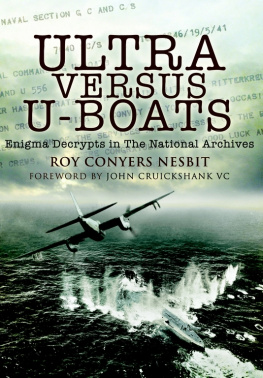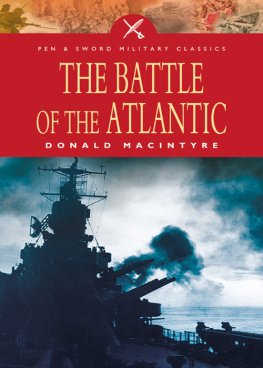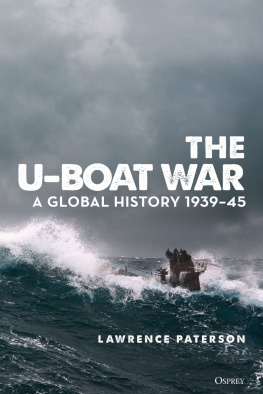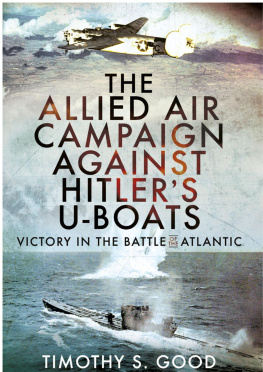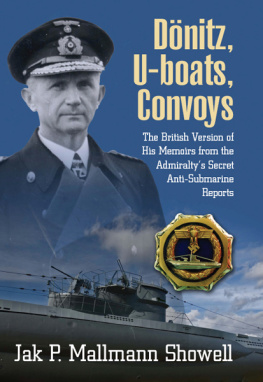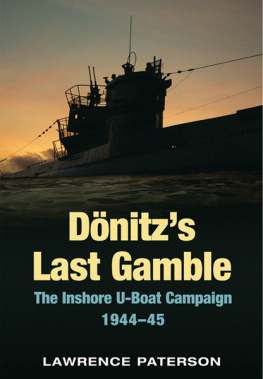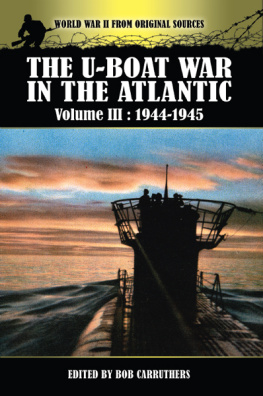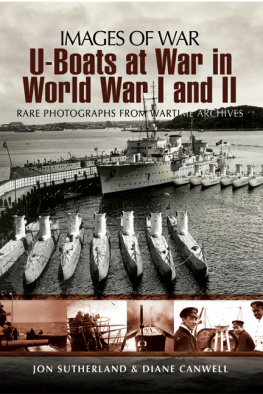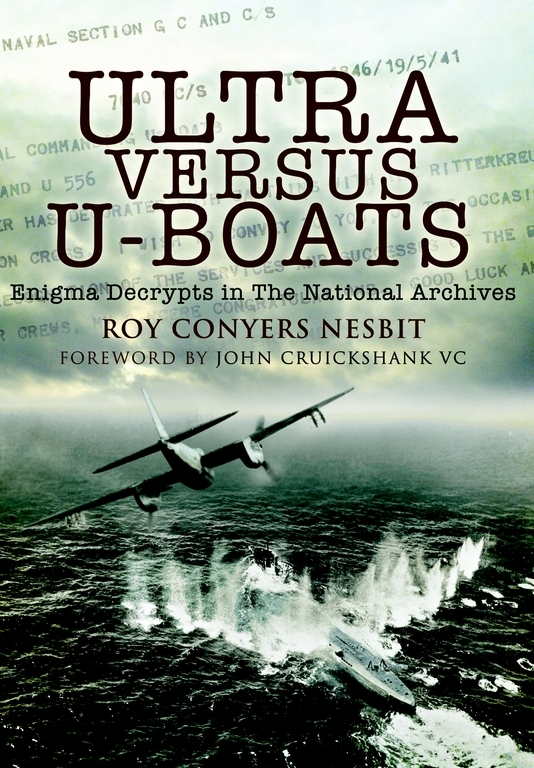I am extremely grateful to Paul Johnson and Hugh Alexander of the Image Library, the National Archives, for initiating this book and providing facilities for the lengthy research required, as well as help and advice during its progress. Two ex-RAF friends from wartime days have provided further help by checking the manuscript and captions, and also making suggestions for improvement; they are Sqn Ldr Dudley Cowderoy and Warr Off Jack Eggleston. More help was provided by others with specialist knowledge. They are Mrs Maureen Annetts of the Commonwealth War Graves Commission; J. Sebastian Cox of the Air Historical Branch (RAF); Chris Davies of the Oscar Parkes Society: Fregattenkapitn a.D. Gnther Heinrich in Germany; Flt Lt A.H. Hilliard; Wg Cdr Mike D. Mockford OBE of the Medmenham Collection; Air Comm Graham L. Pitchfork MBE, air historian and author.
Roy C. Nesbit
Swindon, 2008
Bibliography
Ashworth, Chris, RAF Coastal Command 1936-1969 (Sparkford: Patrick Stephens, 1992)
Barnett, Correlli, Engage the Enemy more closely (London: Penguin, 1991)
Behrens, C.B.A., Merchant Shipping and the Demands of War (London: HMSO & Longmans, Green & Co., 1955)
Bohn, Roland, Raids Ariens sur la Bretagne durant la Seconde Guerre Mondiale (Tome 1, 1940 1942, Tome 2, 1942 1944) (Etudes et Recherches Thmatiques en Finistre et en Bretagne, 1978)
Brown, David, Warship Losses of World War Two (London: Arms & Armour, 1990)
Cremer, Peter, U333 (London: The Bodley Head, 1984)
Enever, Ted, Britains Best Kept Secret (Stroud: Sutton, 1999)
Franks, Norman, Search, Find and Kill (London: Grub Street, 1995)
Freeman, Roger A., The Mighty Eighth War Diary (London: Arms & Armour, 1990)
Goss, Chris, Bloody Biscay (Manchester: Crcy, 1997)
Halley, James J., The Squadrons of the Royal Air Force & Commonwealth 1918 1988 (Tonbridge: Air Britain, 1988)
Hinsley, F.H. et al., British Intelligence in the Second World War (6 vols) (HMSO, 1979 1990)
Hinsley, F.H. & Stripp, Alan, Code Breakers (Oxford University Press, 1993)
Hough, Richard, The Longest Battle (London: Pan Books, 1986)
Jones, R.V., Most Secret War (London: Hamish Hamilton, 1978)
Kaplan, Philip & Currie, Jack, Convoy (London: Arum Press, 1998)
Macintyre, Donald, The Battle of the Atlantic (London: Batsford, 1961)
Niestl, Axel, German U-boat Losses during World War II (London: Greenhill, 1998)
Philpott, Bryan, German Maritime Aircraft (Cambridge: Patrick Stephens, 1981)
Price, Alfred, Aircraft versus Submarine (London: William Kimber, 1979)
Rawlings, John D.R., Coastal, Support and Special Squadrons of the RAF and their aircraft (London: Janes, 1982)
Richards, Denis & Saunders, Hilary St G., Royal Air Force 1939 45 (3 vols) (HMSO, 1953 1954)
Roskill, S.W., The War at Sea (3 vols) (HMSO, 1954 1961)
Schoenfeld, Max, Stalking the U-boat (Shrewsbury: Airlife, 1993)
Sharp, Peter, U-boat Fact File (Leicester: Midland, 1998)
Showell, Jak P. Mallmann, U-boats under the Swastika (Shepperton: Ian Allan, 1987)
Enigma U-boats (Shepperton: Ian Allan, 2000)
Spooner, Tony, Coastal Ace (London: William Kimber, 1986)
Stern, Robert C., U-Boats in action (Texas: Squadron/Signal Publications, 1977)
Sturtivant, Ray, British Naval Aviation (London: Arms & Armour, 1990)
Tarrant, V.E., The Last Year of the Kriegsmarine (London: Arms & Armour, 1994)
Terraine, John, Business in Great Waters (Ware: Wordsworth, 1999)
The National Archives, German Naval Signals, DEFE 3/1 DEFE 3/744
Thetford, Owen, Aircraft of the Royal Air Force since 1918 (London: Putnam, 1988)
Von Mllenheim-Rechburg, Battleship Bismarck (London: The Bodley Head, 1981)
Welchman, Gordon, The Hut Six Story (Cleobury Mortimer: Baldwin, 1998)
CHAPTER ONE
Opening Rounds
A t the outbreak of the Second World War the Kriegsmarine (German Navy) faced enemies at sea which seemed vastly superior in strength and experience to the vessels and personnel it could muster. These were the combined forces of the British and French Navies. The outlook seemed so gloomy that Grossadmiral Dr Erich Raeder, the Commander-in-Chief of the Kriegsmarine, told Adolf Hitler that all his force could do was to show the world how to die with dignity. This force consisted of the fast battleships Scharnhorst and Gneisenau , the pocket battleships Deutschland, Admiral Graf Spee and Admiral Scheer , the ancient and obsolete battleships Schlesien and Schleswig-Holstein , five cruisers and seventeen destroyers. There were also fifty-six U-boats, of which thirty-five were immediately operational; of the total, twenty-five were ocean-going types while the remaining thirty-one had been designed for coastal work, primarily in the Baltic Sea.
In contrast, the Royal Navy alone possessed sixteen battleships, plus five more of the King George V class nearing completion, sixty-one cruisers and ten aircraft carriers. Some of these were outdated, but the Royal Navy stood to be victorious in encounters between heavy warships. If the war could have been deferred for about three years, the Kriegsmarine would have become far more powerful. In May 1935 Hitler had announced that he was deliberately breaching the conditions of the Treaty of Versailles imposed on his country after the First World War. The Luftwaffe was already being re-formed, conscription into the armed forces was being reintroduced, and a vast new programme for rebuilding the Kriegsmarine was under way. There were to be six new battleships, two or three new aircraft carriers, eighteen new cruisers, about thirty new destroyers and about 17,500 tons of new U-boats. All these were intended to be completed by 1942. Hitler had undertaken to restrict this growth so that the ultimate strength of the Kriegsmarine would be no more than 35 per cent of that of the Royal Navy, although of course guarantees from this individual were worthless. The international community was intent on a desire to avoid another ruinous armed conflict and did nothing to impede this programme.
Raeders words were prophetic, but there would be years of unremitting struggle in a harsh and unforgiving environment before they became a reality. His prognosis underestimated the enormous successes that would be achieved by his small U-boat Arm from the early months of the war and the dismay, coupled with fury, which it would cause in Britain.
It was only a few hours after Britain and France declared war on 3 September 1939, in response to Germanys invasion of Poland two days earlier, that the British public received a foretaste of the conflict at sea. The Type VIIA U-30 under the command of Leutnant Zur See Fritz-Julius Lemp was already out in the Atlantic in preparation for war, about 250 miles north-west of Ireland, when a lookout spotted a large vessel steaming in a westerly direction. At 2100 hours Lemp ordered two torpedoes to be fired. Both hit the vessel, which sank. She was the liner Athenia of 13,581 tons, carrying over 1,100 passengers to America, including child evacuees. Of those on board, 112 lives were lost, including 28 Americans.

